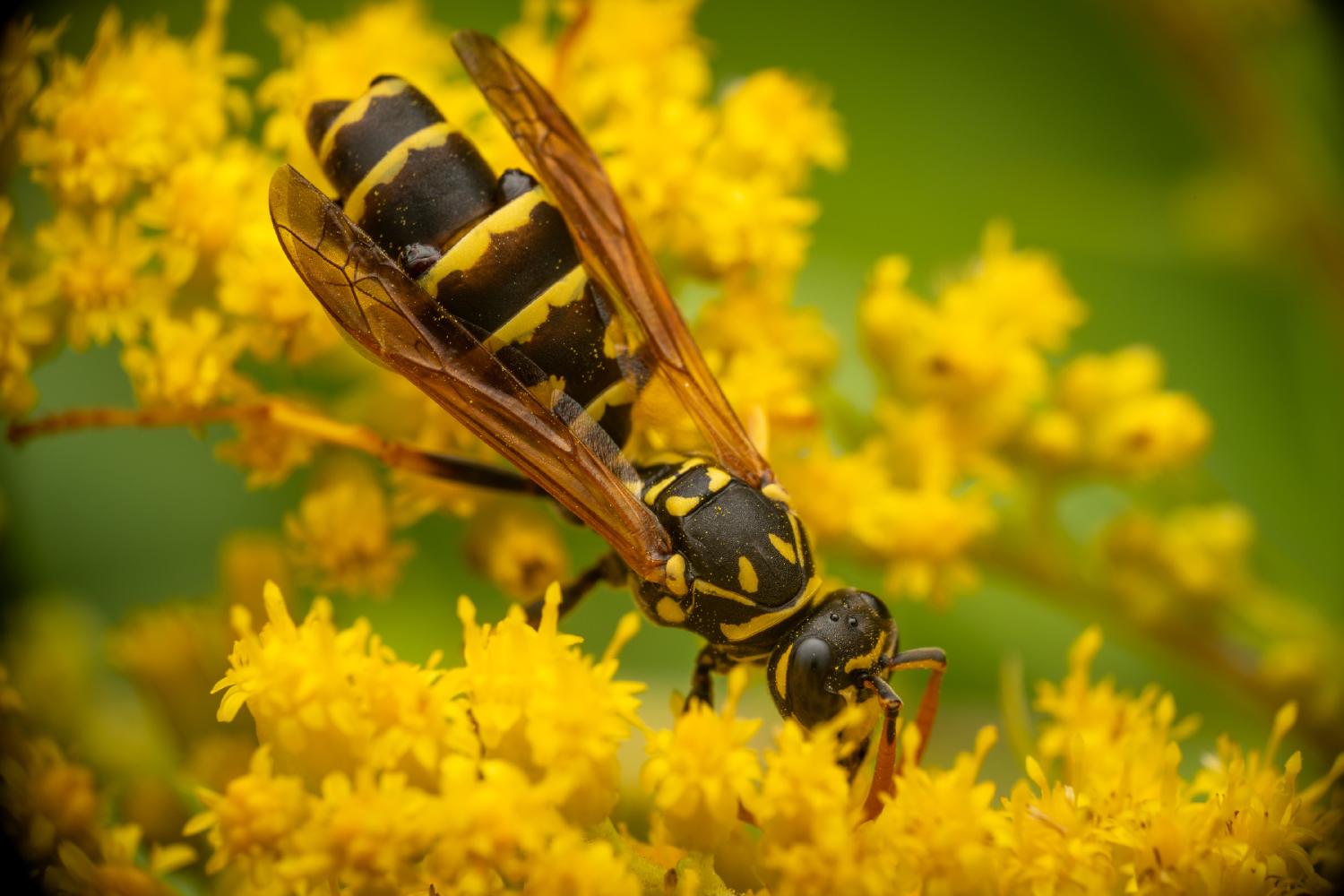European Paper Wasp
Lat. “Polistes dominula“
species
of family
“Hornets, Paper Wasps, Potter Wasps, and Allies“
1 species
The European paper wasp, scientifically known as Polistes dominula, is a species native to southern Europe, North Africa, and parts of Asia. It has also been introduced to other regions such as New Zealand, Australia, and North and South America. The species is often referred to as the European paper wasp due to its native distribution and the nests it constructs from paper and saliva. P. dominula has high levels of genetic diversity in introduced populations, likely due to different dispersal events. It forms colonies and exhibits social hierarchies. The nests of P. dominula are parasitized by various insect species, and the saliva of the wasps has been used to develop a waterproof coating for biodegradable drones.
Taxonomy
The European paper wasp was originally described in 1791 by Johann Ludwig Christ as Vespa dominula. The specific epithet dominula is a noun meaning “little mistress”, and following the International Code of Zoological Nomenclature, species epithets which are nouns do not change when a species is placed in a different genus. Authors who were unaware that dominula was a noun have misspelled the species name as “dominulus” for decades. Another cause of the confusion in the species’ name was the ambiguous distinction between masculine and feminine genitive nouns. P. dominula is often referred to as the European paper wasp because of its native distribution and its nests, which are constructed from paper and saliva. It is also frequently referred to in older literature as Polistes gallicus, a separate species with which it was often confused.
Description and identification
Little variation occurs among individuals of P. dominula; the wing lengths of males range from 9.5 to 13.0 millimetres (3⁄8 to 1⁄2 in), while those of females range from 8.5 to 12.0 millimetres (5⁄16 to 1⁄2 in). Its body is colored entirely yellow and black, similar to that of Vespula germanica, one of the most common and aggressive wasps in its native range. The female mandible is black and sometimes has a yellow spot. Females have a black subantennal mark that rarely has a pair of small, yellow spots. The female vertex sometimes has a pair of small, yellow spots behind the hind ocelli. Females have yellow, comma-shaped scutal spots.
Distribution
The native range of P. dominula covers much of southern Europe and North Africa, and temperate parts of Asia as far east as China. It has also been introduced to New Zealand, Australia, South Africa, and North and South America. Since the mid-1980s, the population of P. dominula has expanded to rather cooler regions, especially towards northern Europe. Global warming is speculated to have raised temperatures of certain areas, allowing P. dominula to expand to originally cooler regions.The first North American occurrence of P. dominula was reported in Massachusetts in the late 1970s, and by 1995, this species had been documented throughout the northeastern USA. However, the species is also likely present in additional states, but has just not yet been reported. Although detailed mechanisms of the species’ dispersal are still unknown, some number of individuals, including the foundresses, may have hidden inside transportable items such as shipping crates, trailers, boats, or other human-made structures used during international trading between countries.
Genetic variations
Introduced populations of P. dominula contain relatively high levels of genetic diversity and these variations are most likely due to different dispersal events. Through genetic observations of diverse regional P. dominula populations, an allelic richness and distribution of private alleles was shown in the introduced population, as well as the oldest population (Massachusetts) had the lowest level of genetic variation. Various dispersion mechanisms existed amongst the P. dominula species and its origin might not be confined to a single regional area. Furthermore, the genetics of Southern Californian population differed from those of both Eastern and Northern California, suggesting the source of the Southern Californian population may be from either an unsampled area with the introduced range or from a different geographic area from within the native range.
Life cycle
Overwintering founding queens, or foundresses, spend about a month in the spring constructing a nest and provisioning offspring, the first of which become daughter workers in the growing colony. One or more foundresses begin the colonies in the spring. If multiple foundresses are present, the one that lays the most eggs will be the dominant queen. The remaining foundresses will be subordinate and do work to help the colony.Males are produced later, and when they start to appear, a few daughters may mate and leave their nest to become foundresses the next season. The switch from production of workers to production of future foundresses (gynes) is not utterly abrupt, as has been considered the case for other species of Polistes. Males are often distinguished from female wasps by their curled antennae and lack of a stinger. The colony disperses in the late summer, with only males and future foundresses produced instead of workers, and individuals frequently clustering in groups (called a hibernaculum) to overwinter. Hibernation does not usually take place on former nest sites.
Social hierarchies established within the colony can also influence individual P. dominula’s longevity. Queens live longer than the males or the workers because the workers protect the queens from predators. The queen starts laying eggs in late March or early April, immediately after the “founding phase” of the newly built nest. Then, the colony disperses in the late summer, with only males and future foundresses produced instead of workers. Although individuals frequently cluster in groups (to overwinter), neither most nonreproductive males nor nonreproductive females survive the winter because their lifespans are shorter than a year (around 11 months) and they best survive during warm temperatures. Queens may survive the winter by hibernating.
Survival advantages
Many regions have been reported which were originally home for P. fuscatus have slowly altered to that of P. dominula. A few possible factors contribute to the prevalence of P. dominula over P. fuscatus, specifically in settling into a territory. Some of the factors include productive colony cycle, short developmental time, aposematic coloration, a generalist diet, and the ability to colonize new environments.
Relatedness
P. dominula is a social insect that lives in colonies. They are haplodiploid insects, as are other Polistes species. The haploid males produce identical haploid sperm, and diploid females produce haploid eggs through meiosis. In most social insects, colonies are composed of related individuals, and social insects are assumed to help close relatives according to W. D. Hamilton’s theory of kin selection. However, in P. dominula, 35% of the nest mates are unrelated. In many other species, unrelated individuals only help the queen when no other options are present. In this case, subordinates work for unrelated queens even when other options may be present. No other social insect submits to unrelated queens in this way. This seemingly unfavorable behavior parallels some vertebrate systems. This unrelated assistance may be evidence of altruism in P. dominula.The majority of nests had one or more females that were unrelated, especially in the winter before nests are formed and workers born. The nests tend to form from foundresses of different nests from previous years. The foundresses are also found overwintering with other wasp species, showing why unrelated wasps are found during winter. However, after winter when the nests are starting to be formed, an increase in relatedness in the nests is seen, which could result from foundresses searching for more related sisters, instead of unrelated wasps. After winter, as wasps leave their winter areas and return to their nests, an increase in relatedness occurs in the early nest phase. In later stages of the nest, more unrelated wasps are found, which could be because new wasps join established nests.
Parasitoidism
P. dominula nests have resident brood parasites and parasitoids, including predacious Lepidoptera larvae, Hymenoptera, Diptera, and Strepsiptera. P. dominula is also parasitized by Polistes sulcifer, a permanent workerless social parasite. P. sulcifer females take over the host colony by eliminating dominant foundresses and matching their cuticular profiles. P. sulcifer females gain these cuticular profiles by intensively grooming and licking the host foundresses and workers, or from the nest material which is covered in cuticular hydrocarbons essential for nest mate recognition. This chemical mimicry allows foreign P. sulcifer females to gain acceptance from the host insects. The first well-documented case of parasitoidism of the North American invasive population was reported in 2010. P. dominula are also often infected by Xenos vesparum, a permanent entomophagous endoparasite.
Industrial use of salivary proteins
Salivary proteins harvested from the nest of P. dominula have been cloned for use as a waterproof coating used in the manufacture of biodegradable drones. The lightweight material used to construct the body of the UAV consists of fungal mycelium covered with bacterial cellulose sheets. The cellulose is then waterproofed with a coating of the cloned protein, which is a component of the saliva used by the wasps to waterproof their paper nests.
Further reading
Karsai, I. & Penzes, Z. (1996). “Intra-specific variation in the comb structure of Polistes dominulus: parameters, maturation, nest size and cell arrangement”. Insectes Sociaux. 43 (3): 277–296. doi:10.1007/BF01242929. S2CID 24171685.
External links
Paper wasp Polistes dominula reference photographs, biological notes Polistes dominula facial markings indicating dominance “Phylogenetic Tree of Polistes dominula "
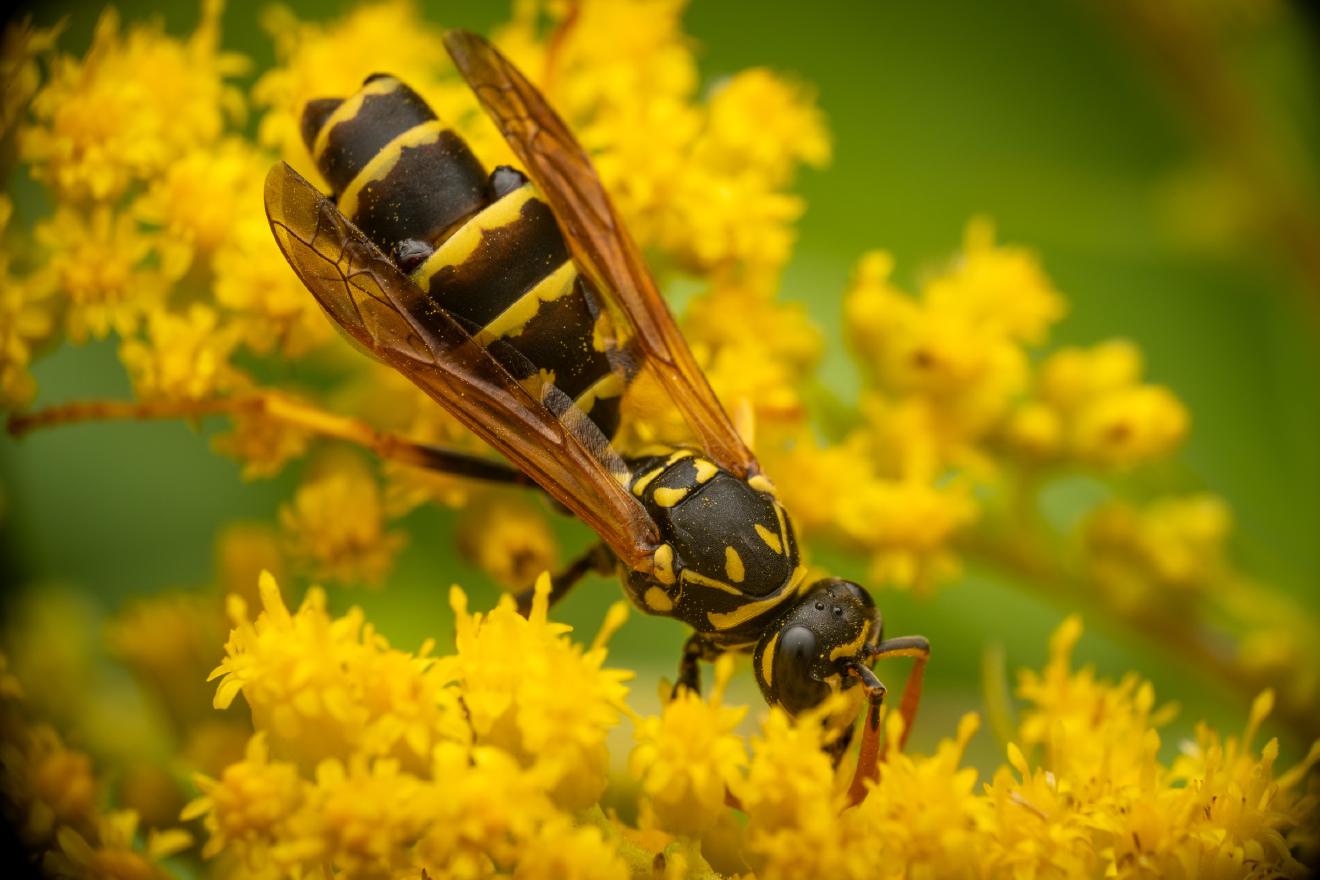

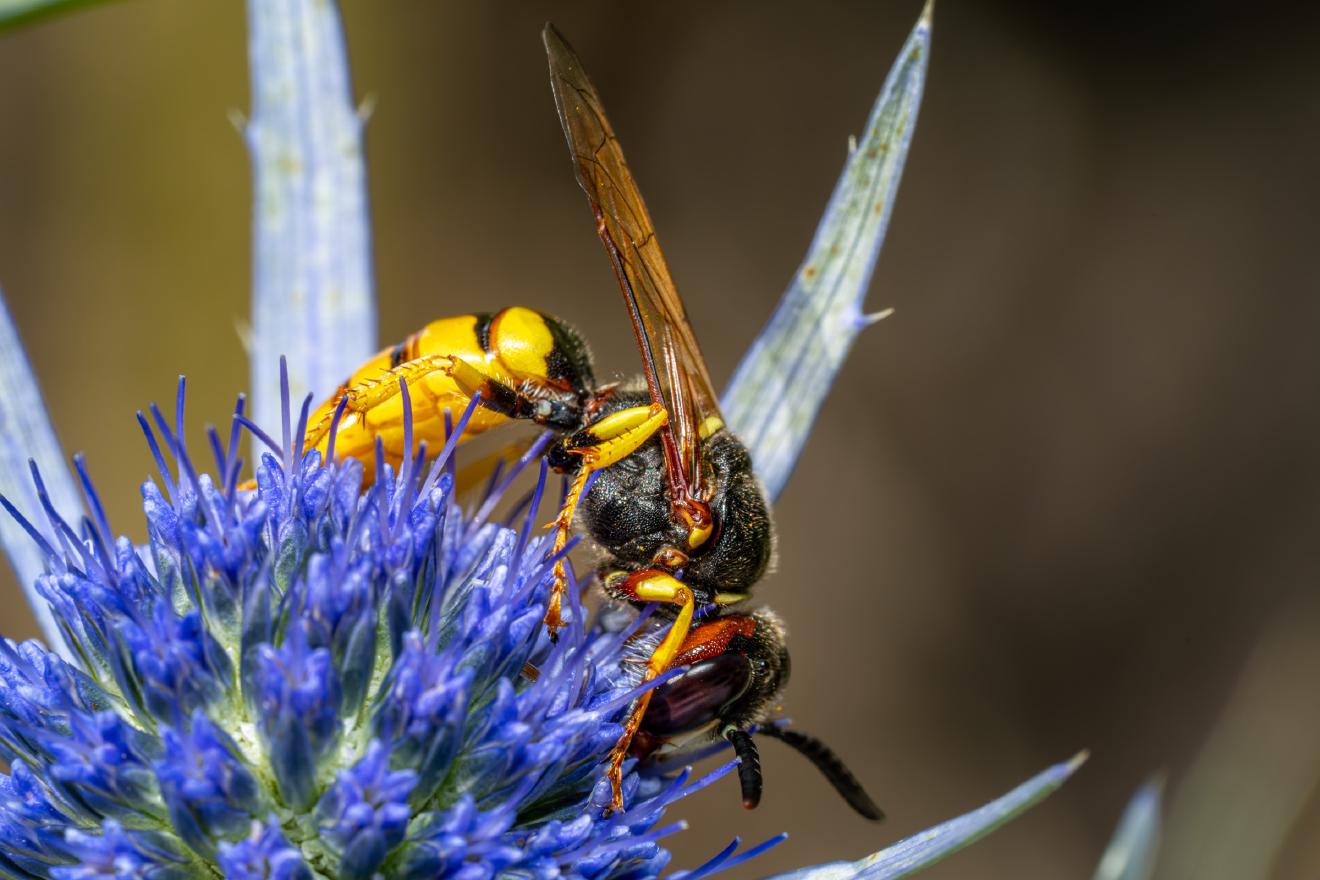
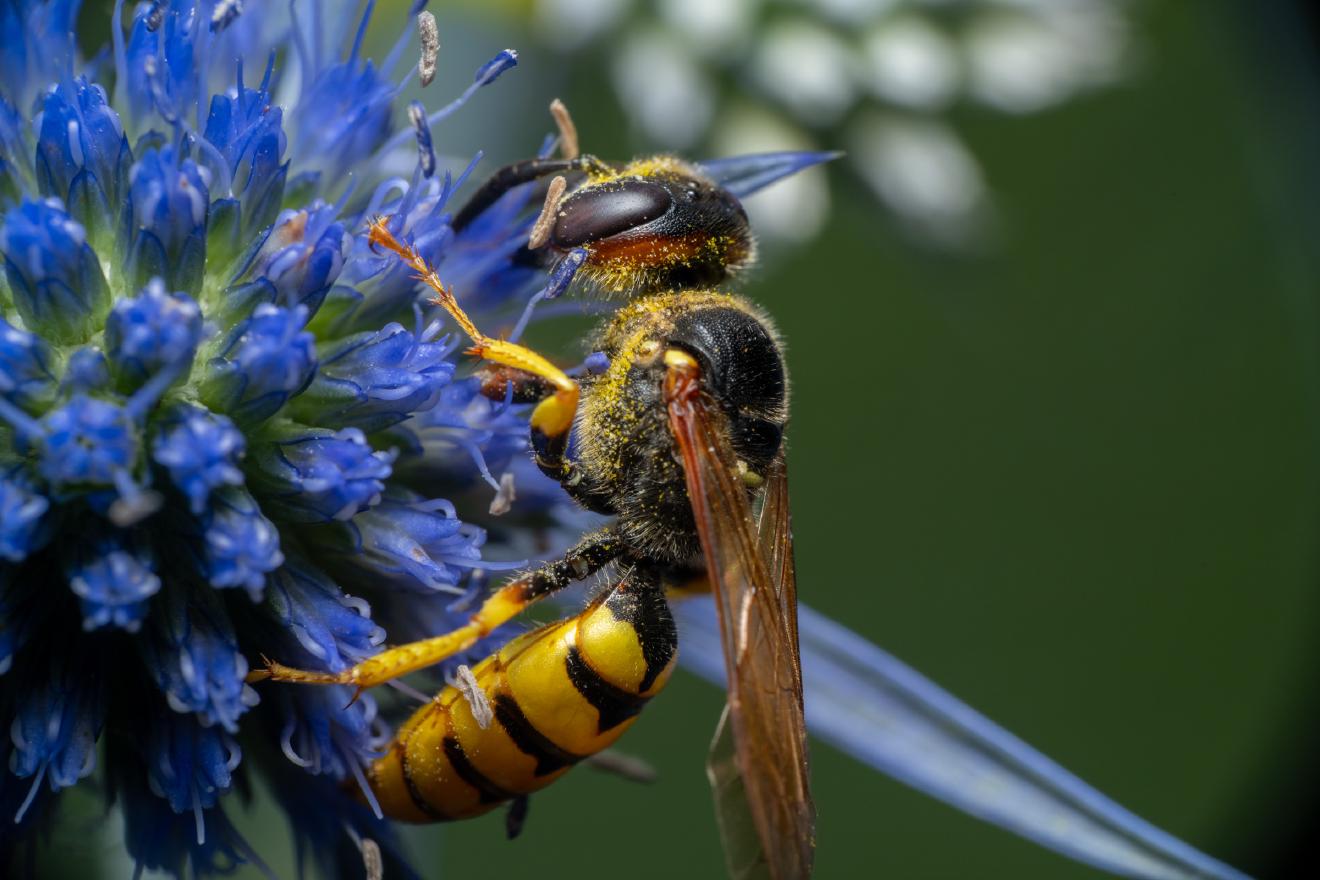
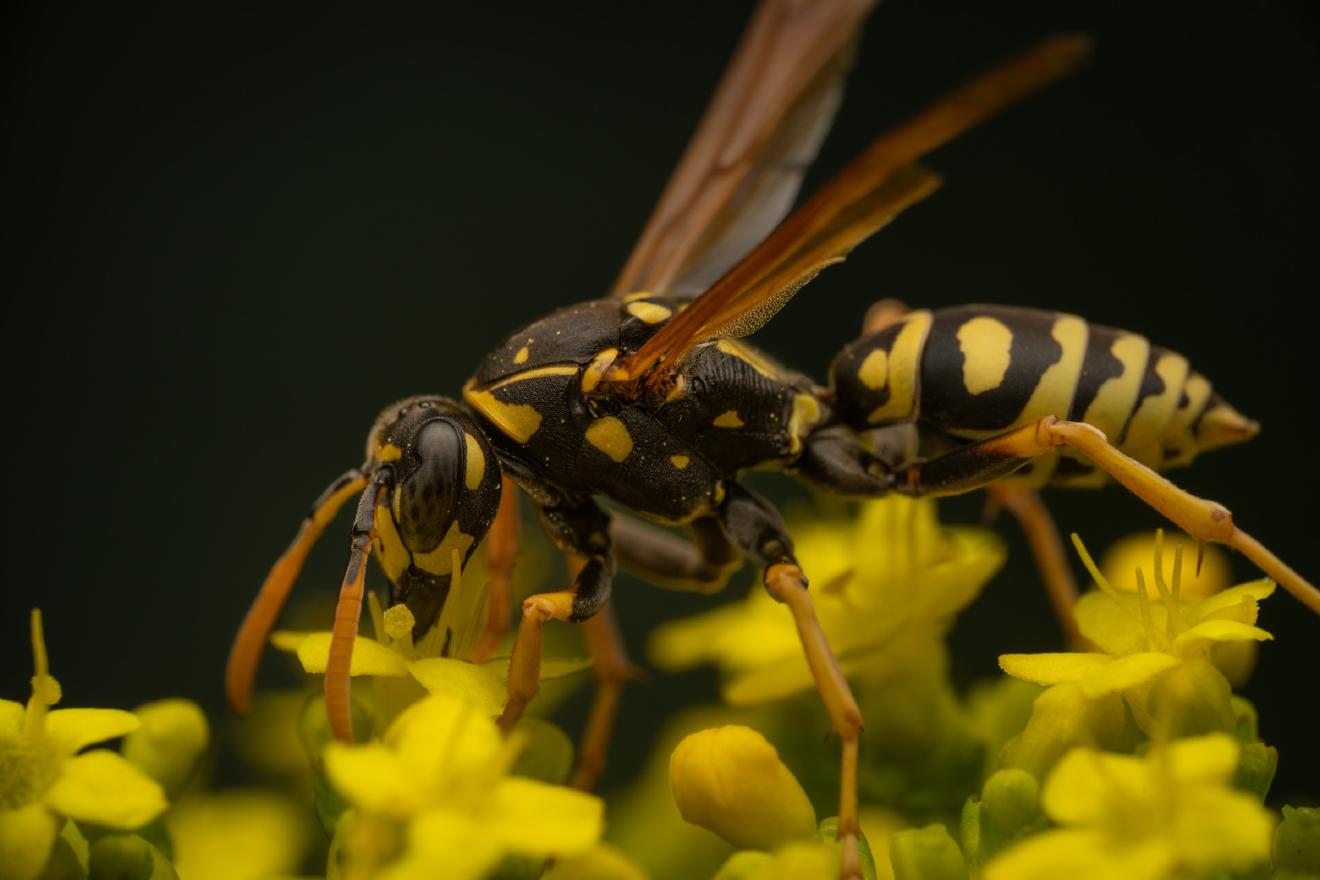
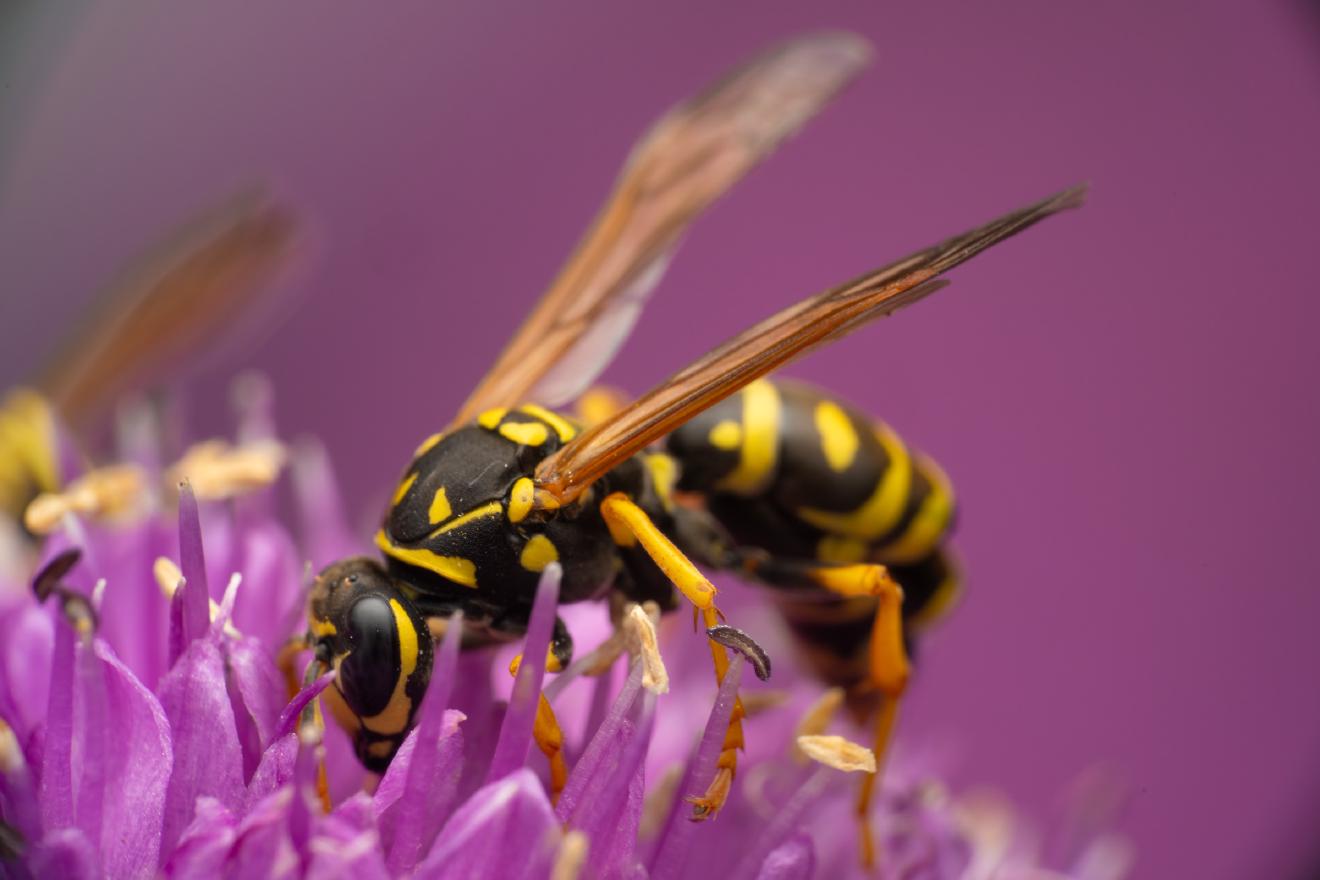
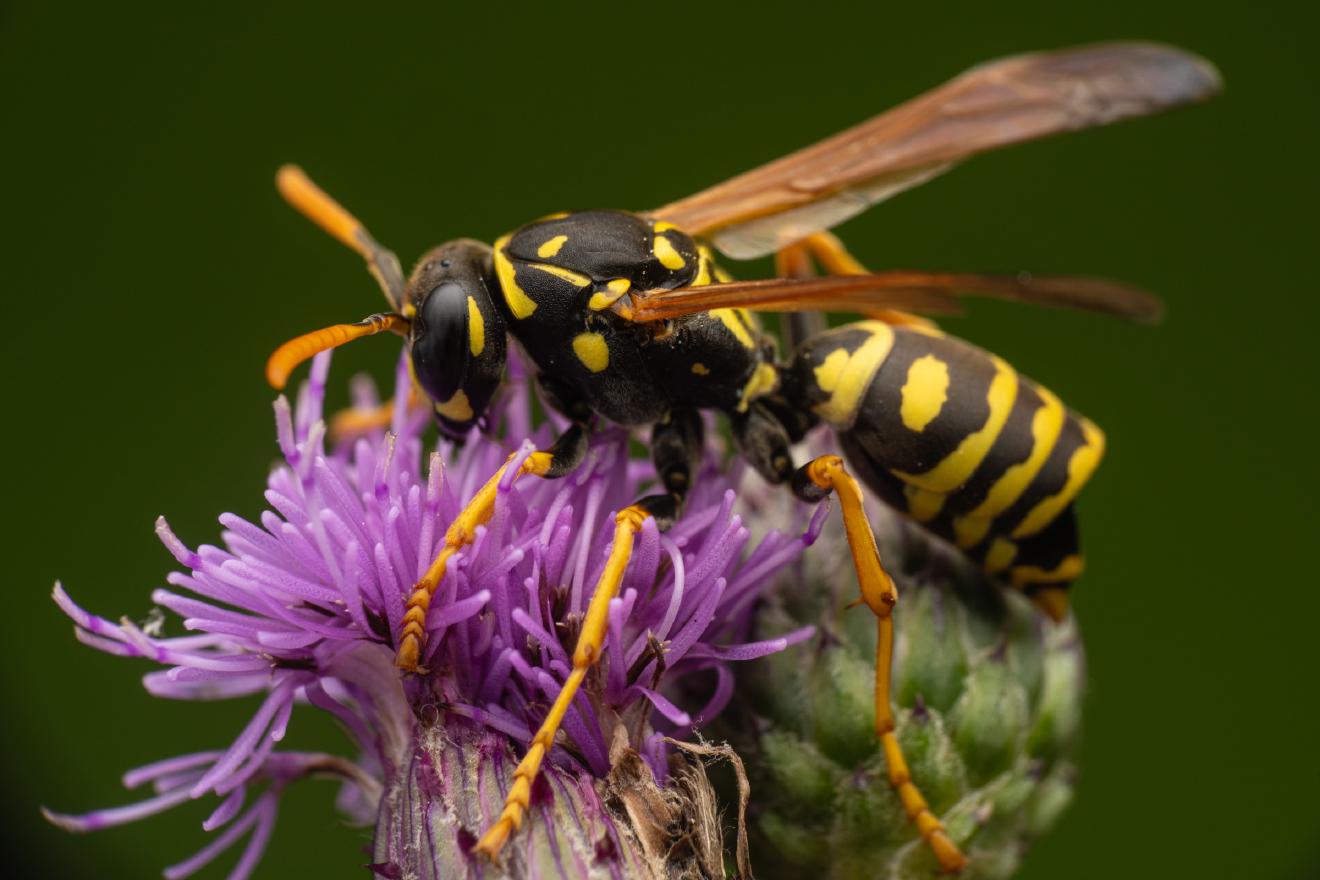
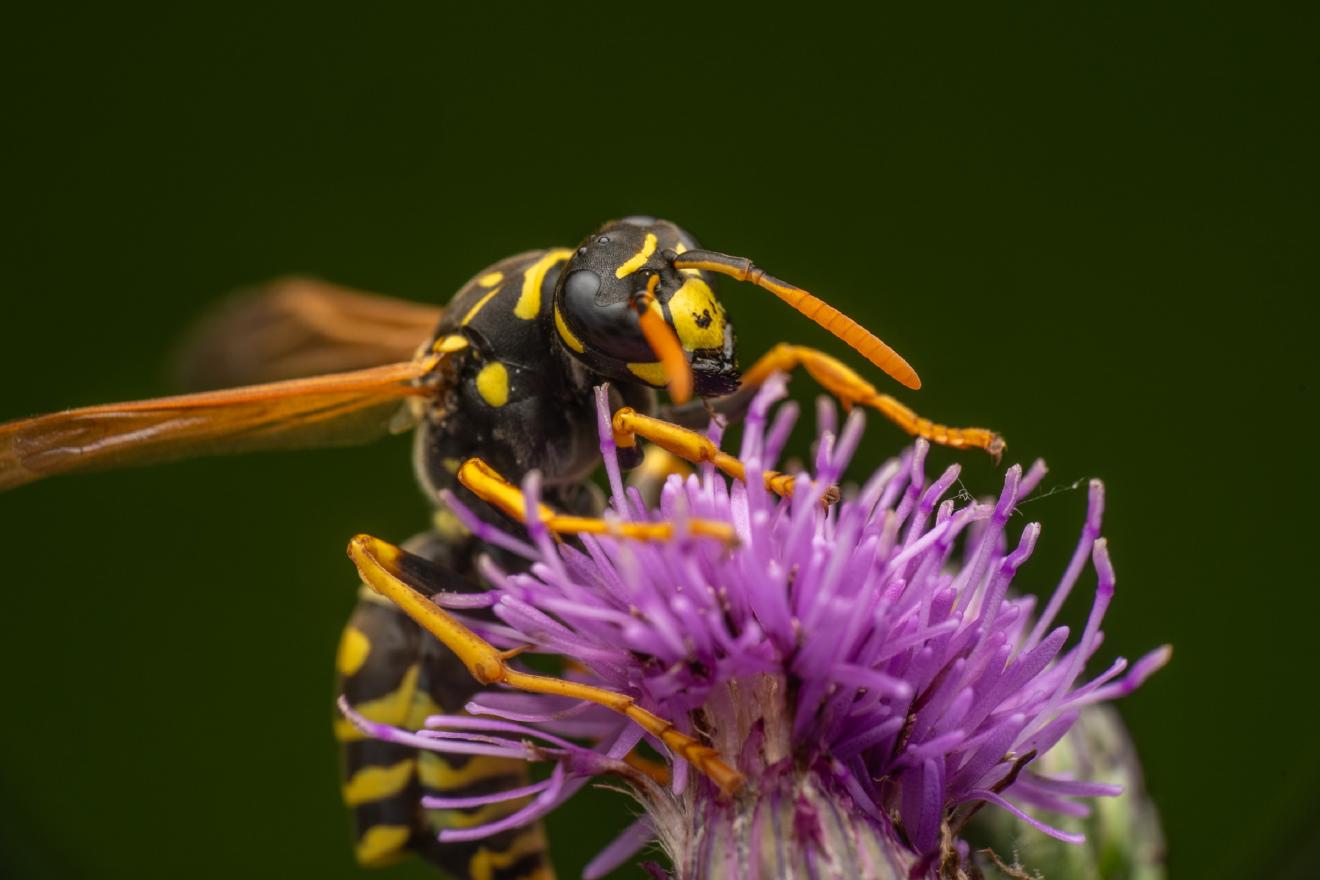
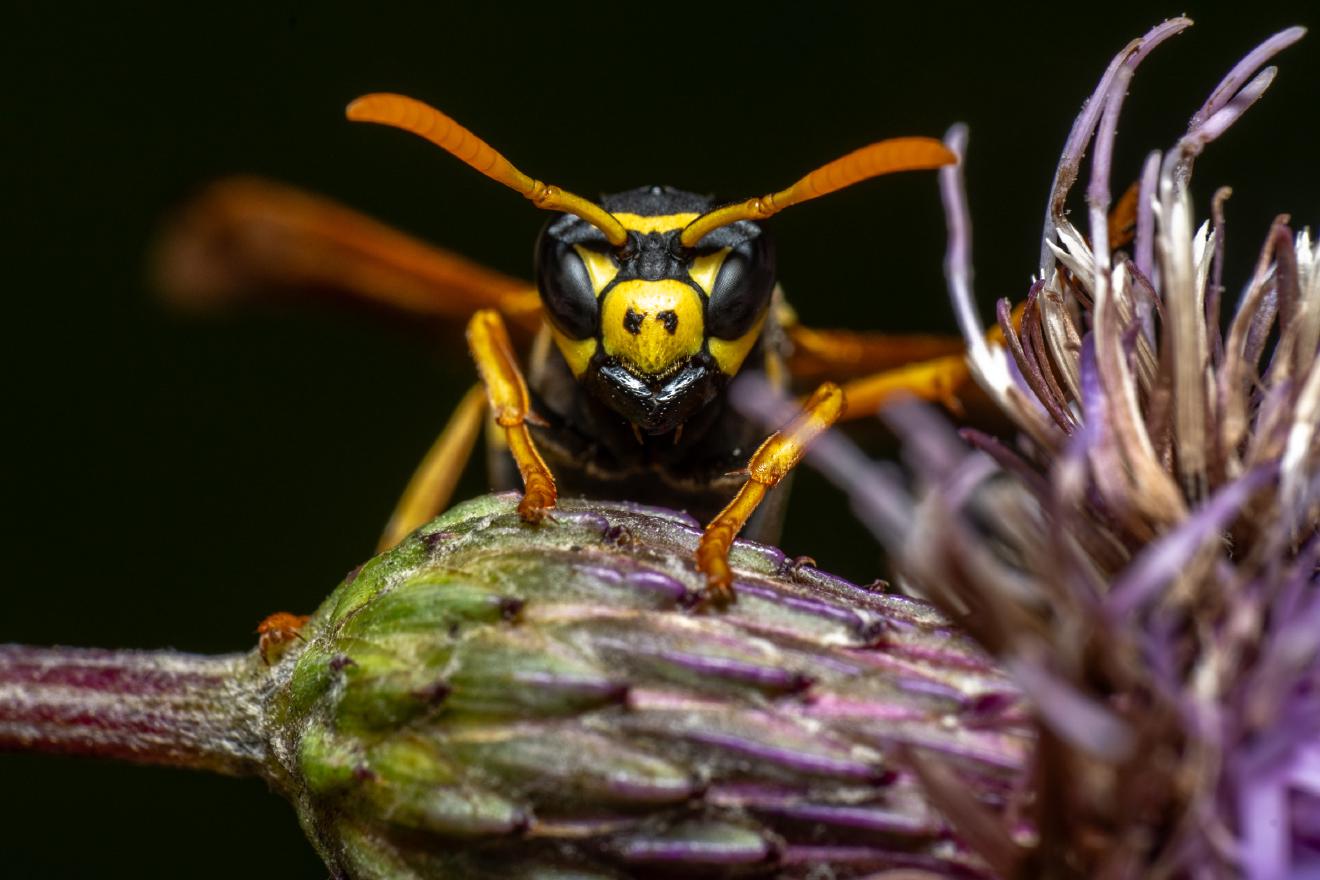
Ancestry Graph
Further Information
Copyright

This article uses material from the Wikipedia article Polistes dominula the free encyclopedia Wikipedia which is released under Creative Commons Attribution-ShareAlike 4.0 International License). On Wikipedia a list of authors is available.
